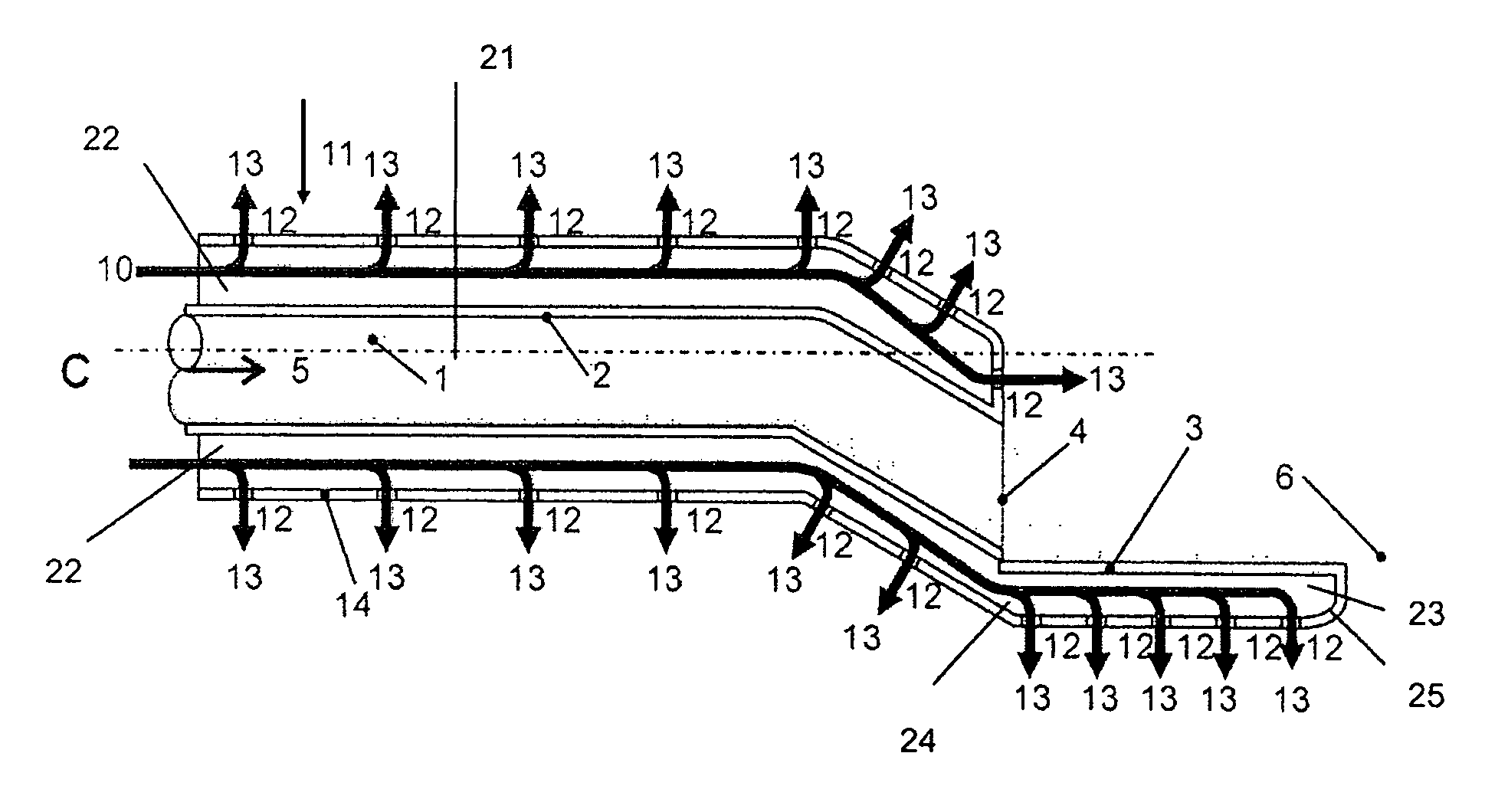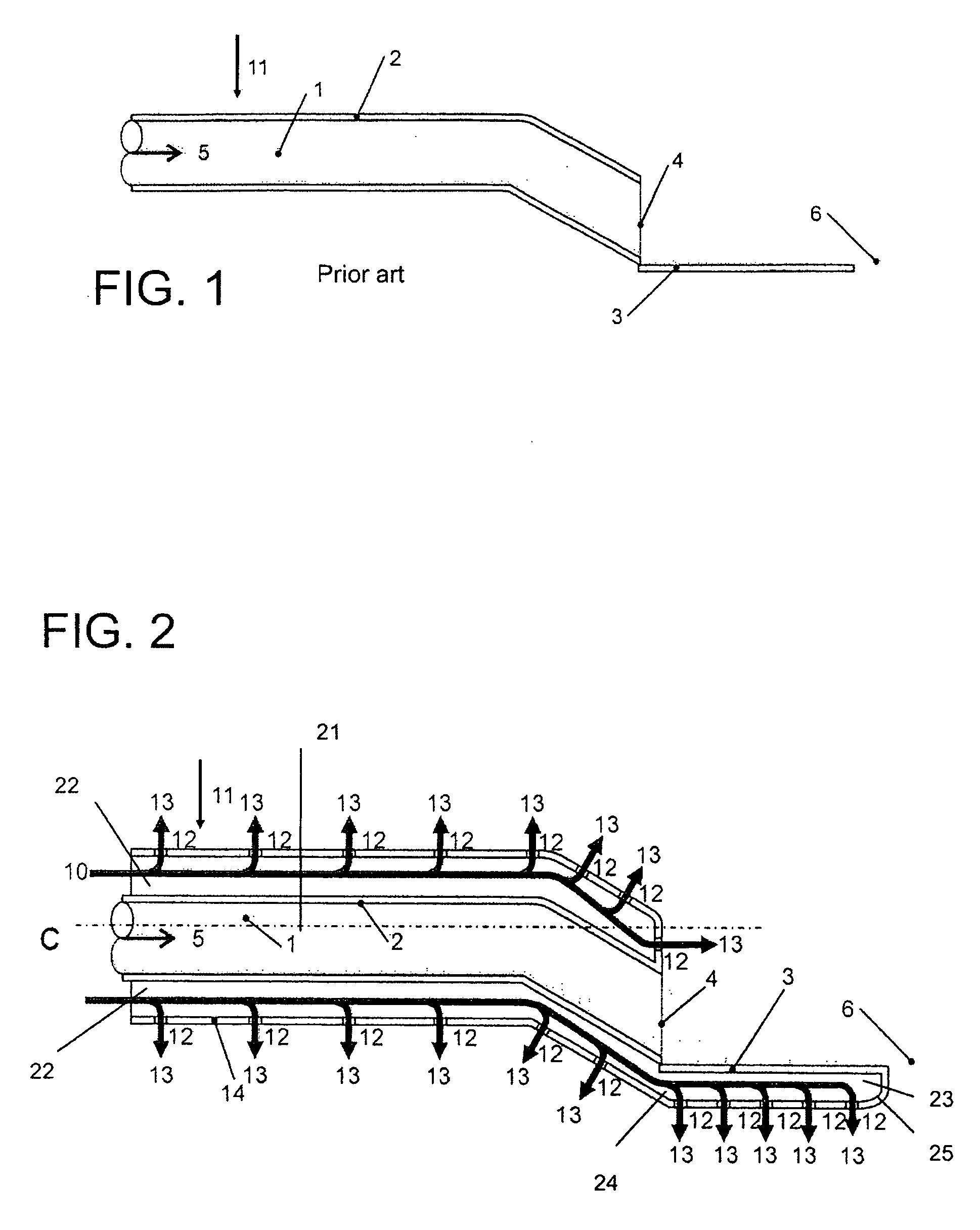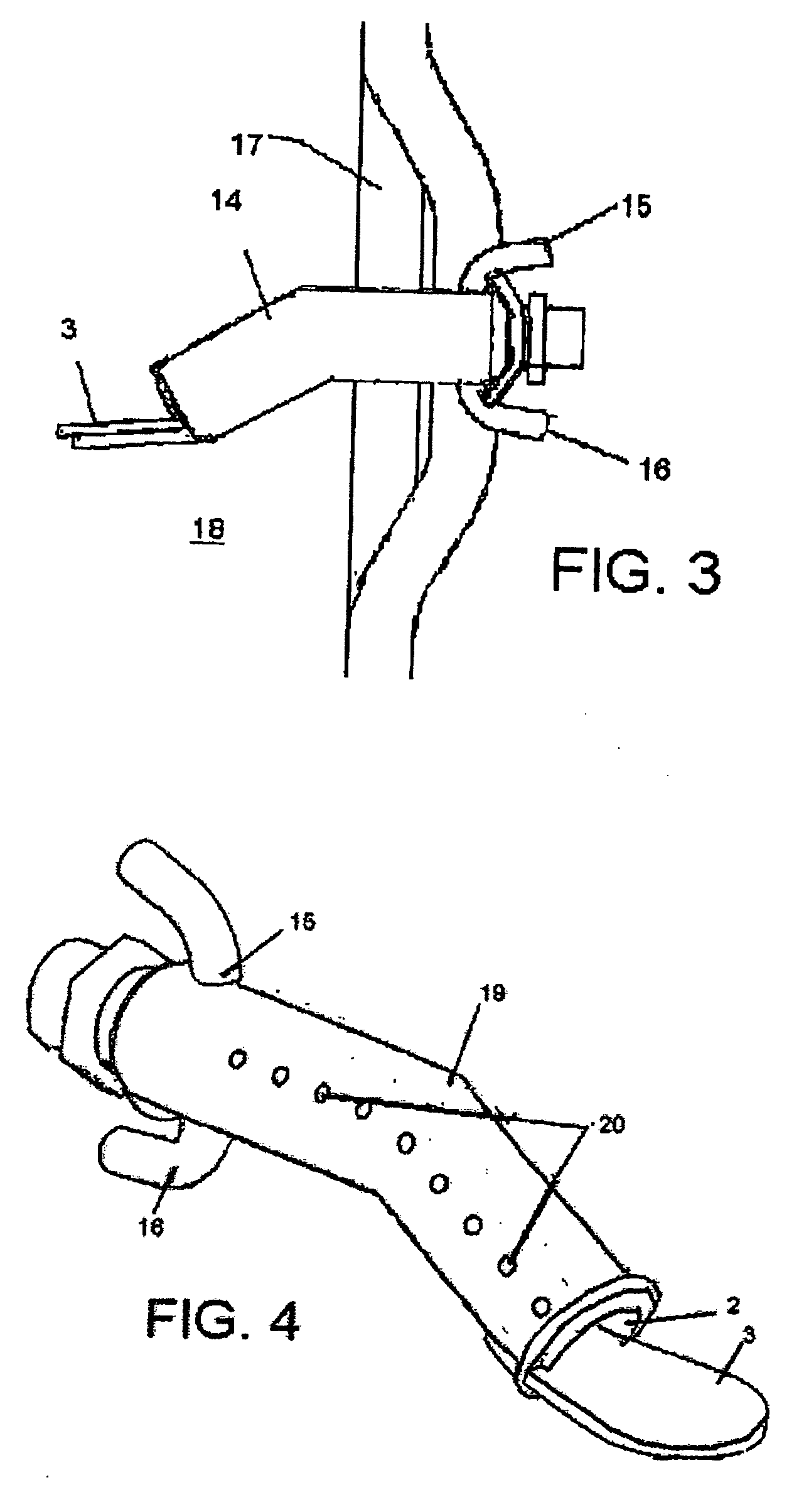Apparatus and method for a liquid gun
a liquid gun and apparatus technology, applied in lighting and heating apparatus, combustion process, steam boiler components, etc., can solve the problems of uncooled steel surfaces, corrosion, deposition and fouling of furnace walls, etc., and achieve the effect of increasing the flow velocity
- Summary
- Abstract
- Description
- Claims
- Application Information
AI Technical Summary
Benefits of technology
Problems solved by technology
Method used
Image
Examples
Embodiment Construction
[0034]FIG. 2 illustrates a conventional liquor gun of the type illustrated in FIG. 1, to which cooling and cleaning systems have been added to the liquor gun.
[0035]An outer casing tube 14 is arranged around a liquor spray tube 2. Emulsion 10 formed by water and steam flows into the space surrounding the liquor spray tube 2, to the emulsion space 22. A device (not shown) for producing the emulsion is located prior to the liquor gun. The emulsion is discharged from the emulsion space 22 via pores or holes 12 in form of small jets 13 into the furnace. At the same time, the water in the emulsion is evaporated and binds heat, cooling the outmost surface 14 of the liquor gun. The deflector plate 3 is formed by a double plate structure, the interior 23 of which is in connection with said emulsion space 22 at point 24. Thus, emulsion flows also to the interior 23 of the deflector plate, and the lower surface 25 of the deflector plate is provided with openings 12, wherethrough emulsion is al...
PUM
| Property | Measurement | Unit |
|---|---|---|
| diameter | aaaaa | aaaaa |
| width | aaaaa | aaaaa |
| length | aaaaa | aaaaa |
Abstract
Description
Claims
Application Information
 Login to View More
Login to View More - R&D
- Intellectual Property
- Life Sciences
- Materials
- Tech Scout
- Unparalleled Data Quality
- Higher Quality Content
- 60% Fewer Hallucinations
Browse by: Latest US Patents, China's latest patents, Technical Efficacy Thesaurus, Application Domain, Technology Topic, Popular Technical Reports.
© 2025 PatSnap. All rights reserved.Legal|Privacy policy|Modern Slavery Act Transparency Statement|Sitemap|About US| Contact US: help@patsnap.com



